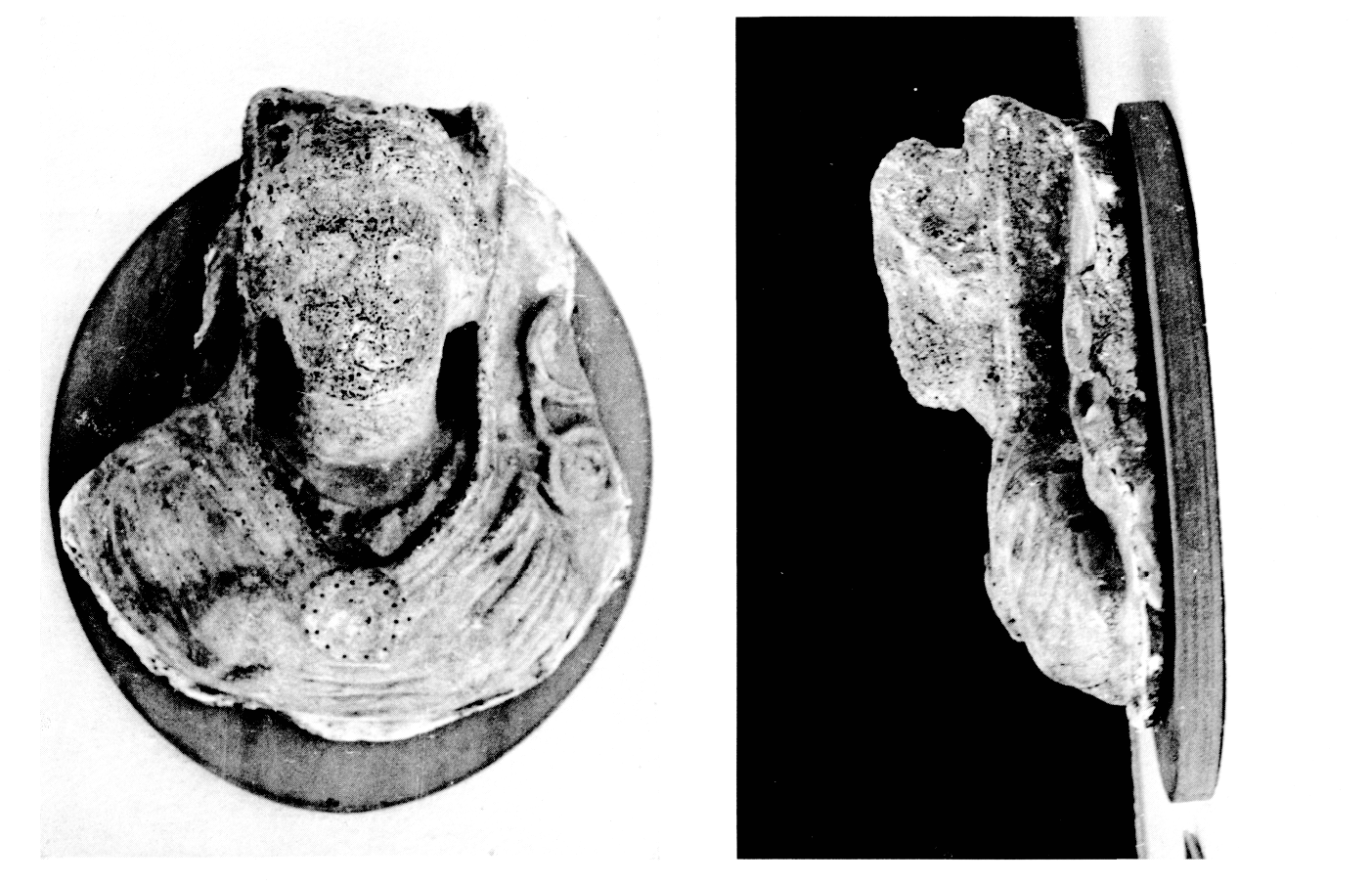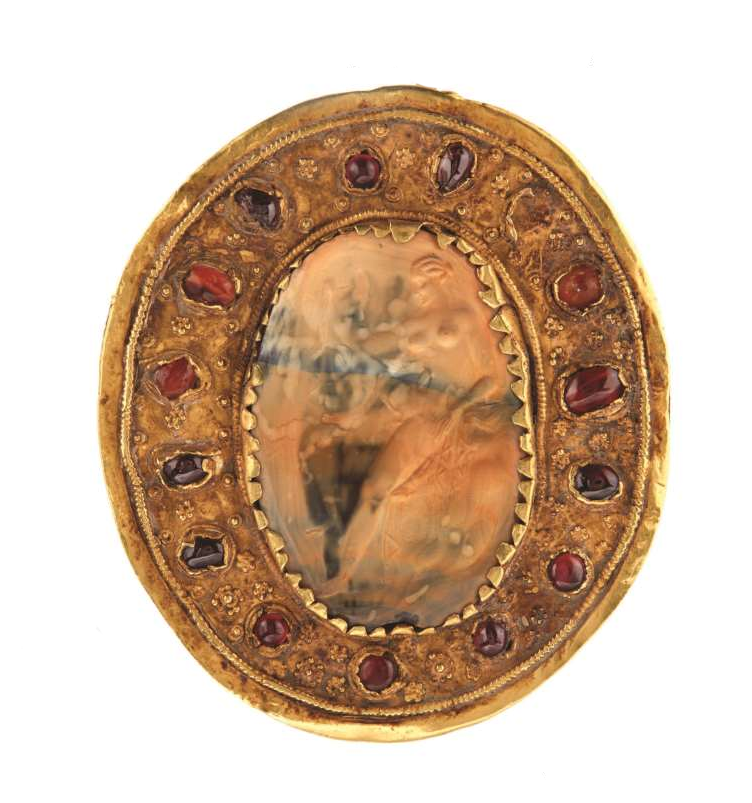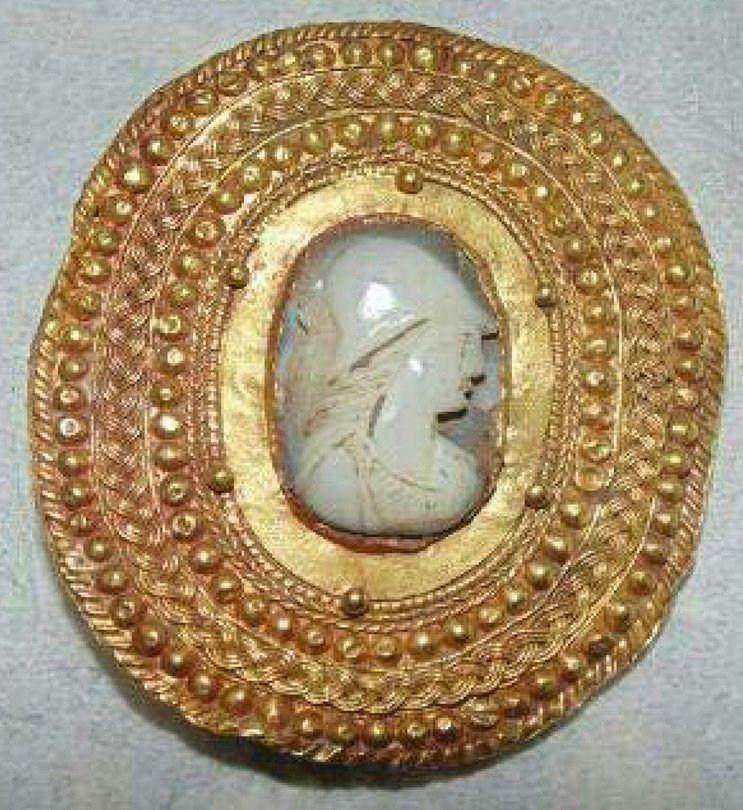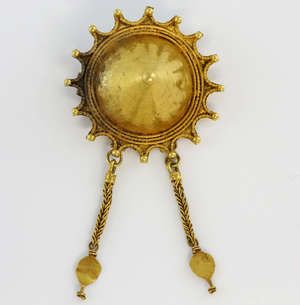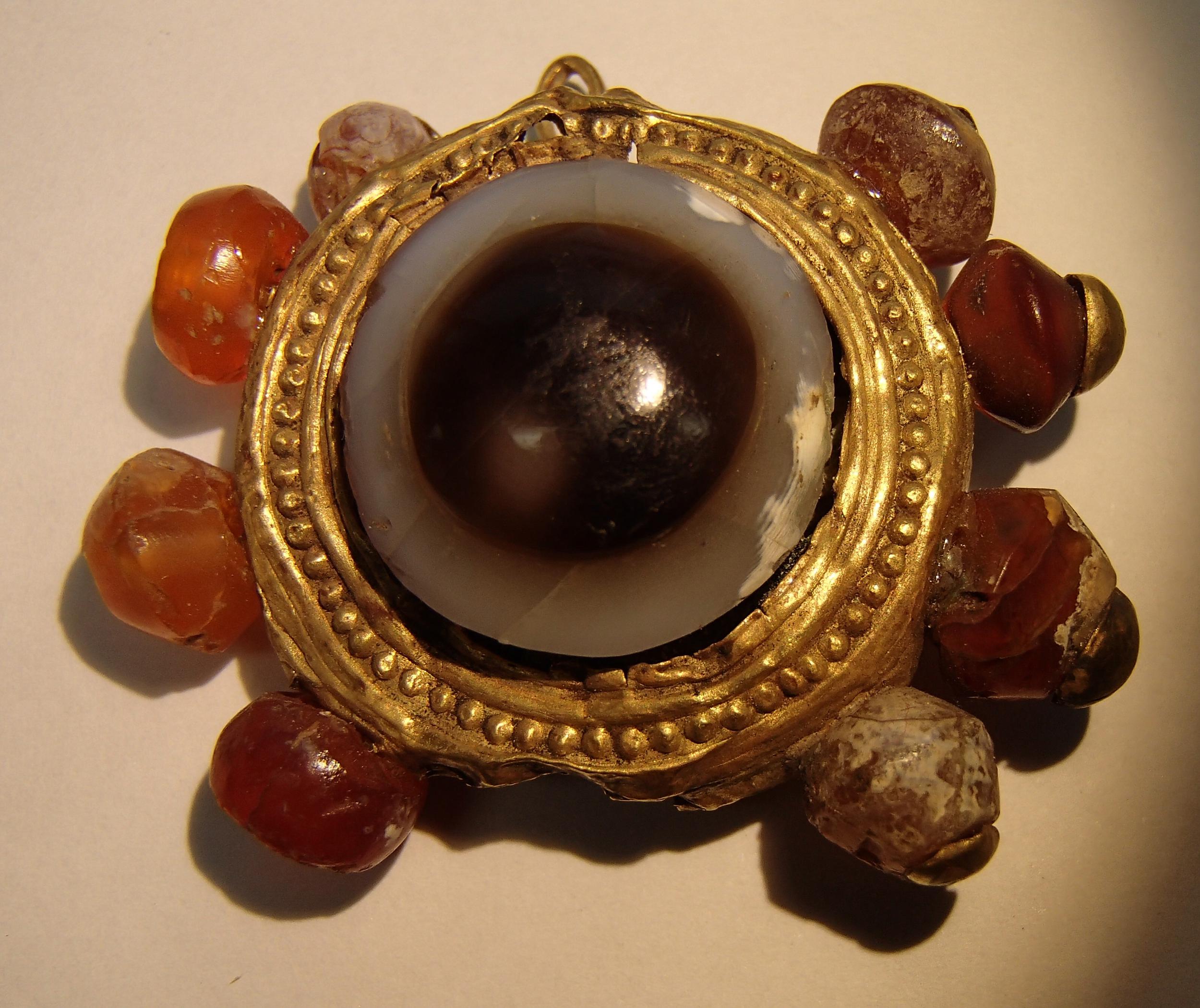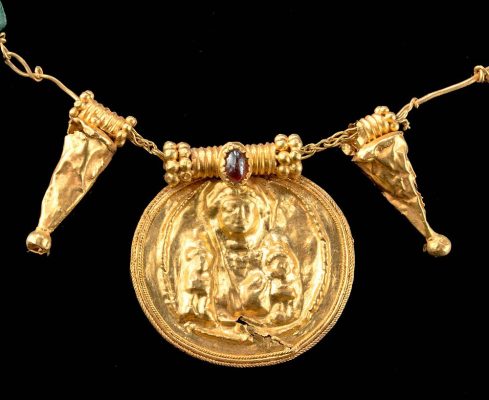

“
Roman, Imperial, ca. 2nd century CE. An exquisite necklace featuring a circular medallion comprised of a 84% gold (equivalent to 20K+) depicting the goddess Cybele in repousse, holding a scepter, wearing a headdress topped by a ruby cabochon inlay, and flanked by two lions. The pendant is elegantly framed by a finely delineated filigree double border, and the applied loop atop (which includes a stunning ruby cabochon) is beautifully delineated with ribs and termini comprised of double bands of granules. Flanking the pendant are two conical 84% gold (20K+) beads that also present decorative loops atop, delineated in the same style as that above the medallion (save the ruby) with a lovely gold granule at the tip. Weight of gold medallion & beads is ~ 4.2 grams. Gold quality: 84% gold (equivalent to 20K+). Size: medallion 1.25″ W x 1.25″ H (3.2 cm x 3.2 cm); conical gold beads .875″ L (2.2 cm); necklace strand 19.5″ L (49.5 cm)
These beads form the centerpiece of a lengthy strand presenting 24 green glass beads of hexagonal forms, similar in shape and color to emeralds, and 6 rounded glass beads of blush hues, all joined via short links of gold wire and resolving in a gold hook and loop clasp.
Cybele, the Mother Goddess (Magna Mater or Great Mother) of Rome, is traditionally shown in the company of lions or transported on a lion-drawn chariot and is oftentimes associated with wild animals, particularly lions. Here, each lion sits loyally by her side. Interestingly, the goddess is presented in a much larger scale than the wild felines – this scale differential was perhaps intended to symbolize her deified status.
Lions were famously featured in many ancient myths, perhaps the most famous being that of Hercules (Greek Herakles) slaying the Nemean lion for his first labor. In this example, they are accompanying Cybele, the Mother Goddess of Rome. Lions were also favorite iconography for buildings, coins, and statues. Examples include the Lion Gate to the Citadel of Mycenae, the Terrace of the Lions on the island of Delos, and the lion hunt mosaic from Pella featuring Alexander engaged in a lion hunt. Of course lions were also used in the Roman arenas where they would fight other animals, such as tigers and bears.
Published: “The Gift of the Gods,” no. 92, p. 66.
Cf. a necklace in the Brooklyn Museum, published in A. Oliver, Jr. & P. Davidson, “Ancient Greek and Roman Gold Jewelry in the Brooklyn Museum” (Brooklyn, 1985), cat. No. 192.
Provenance: ex-Frances Artuner collection, Belgium, collected in the 1960s”



